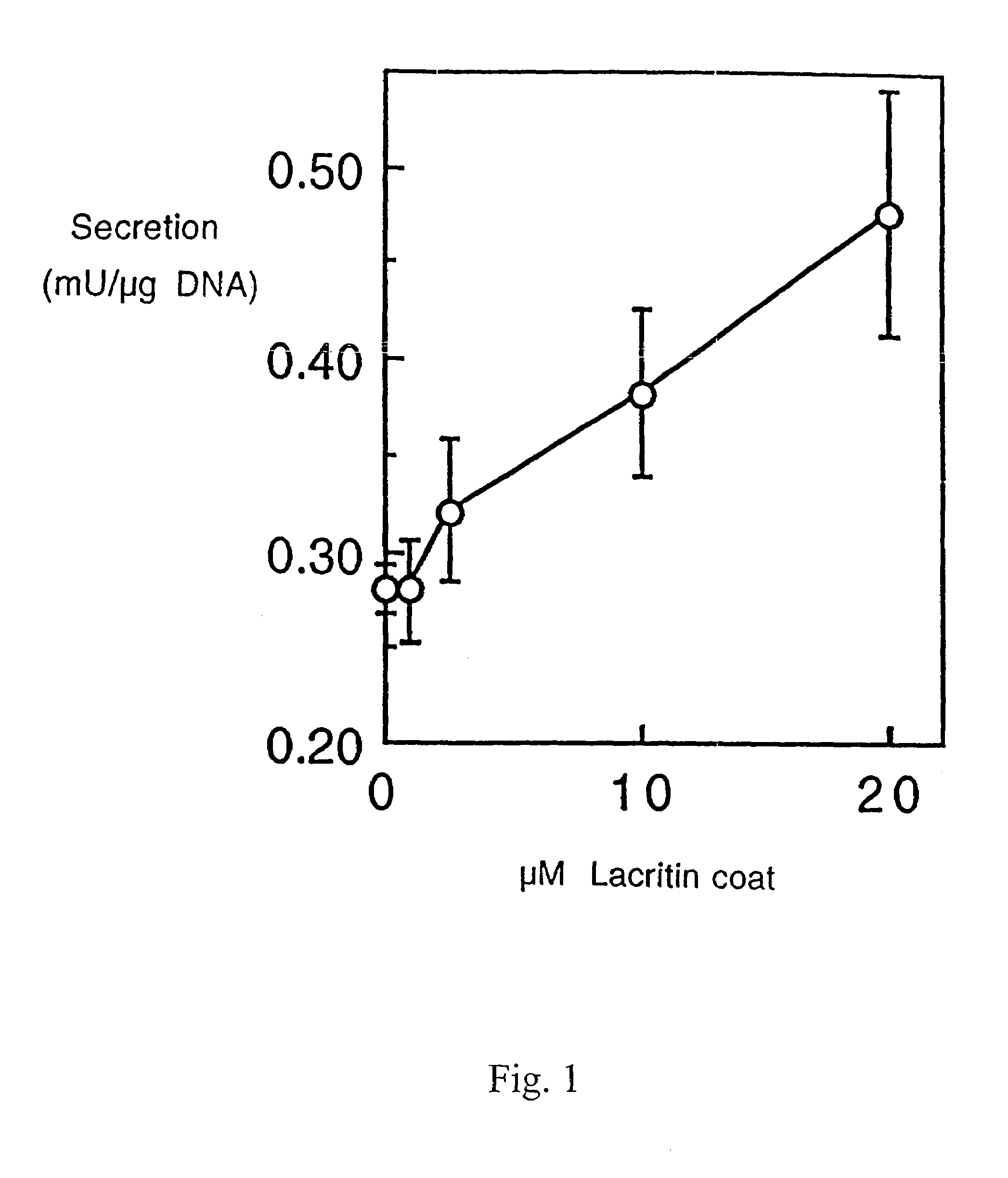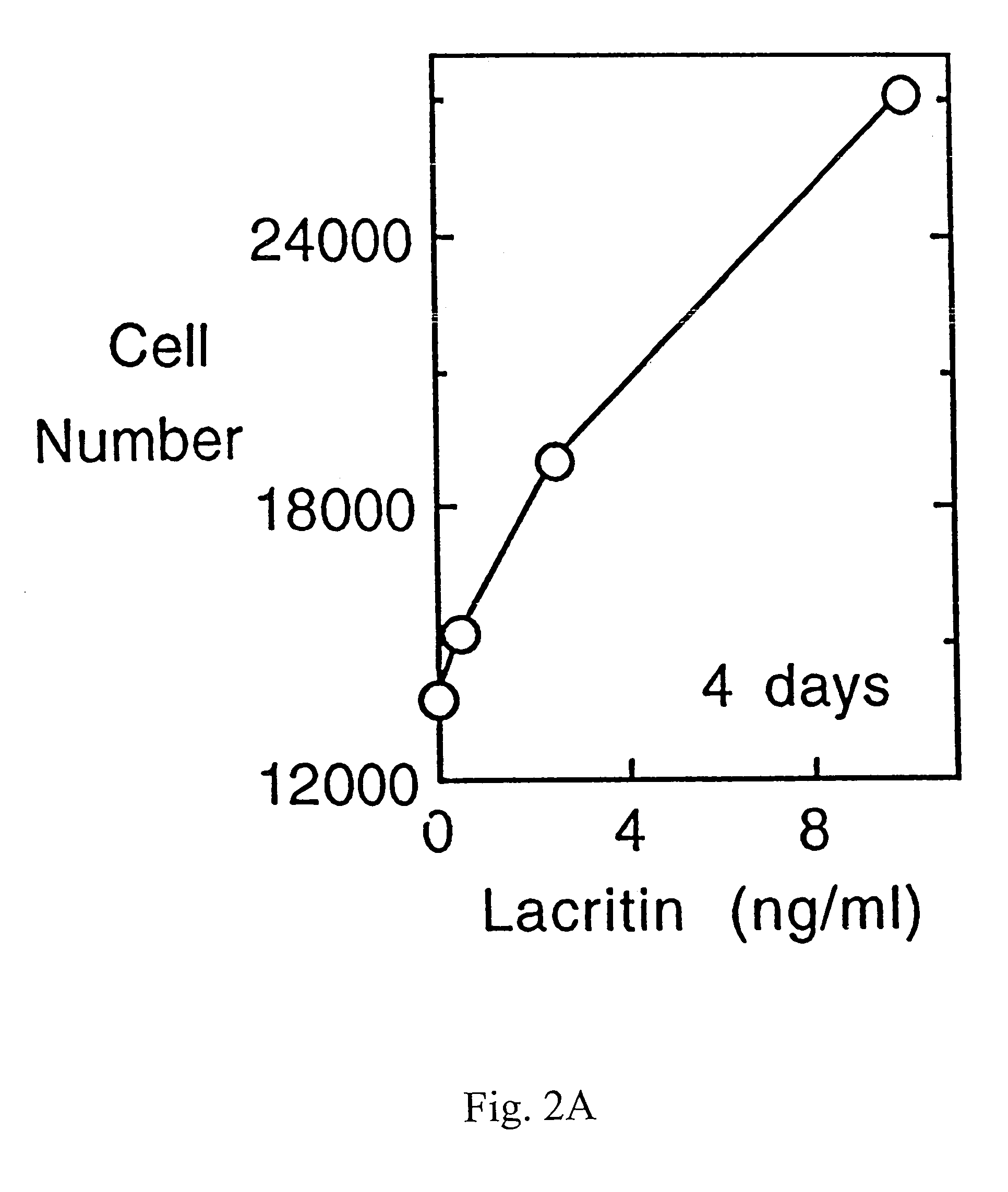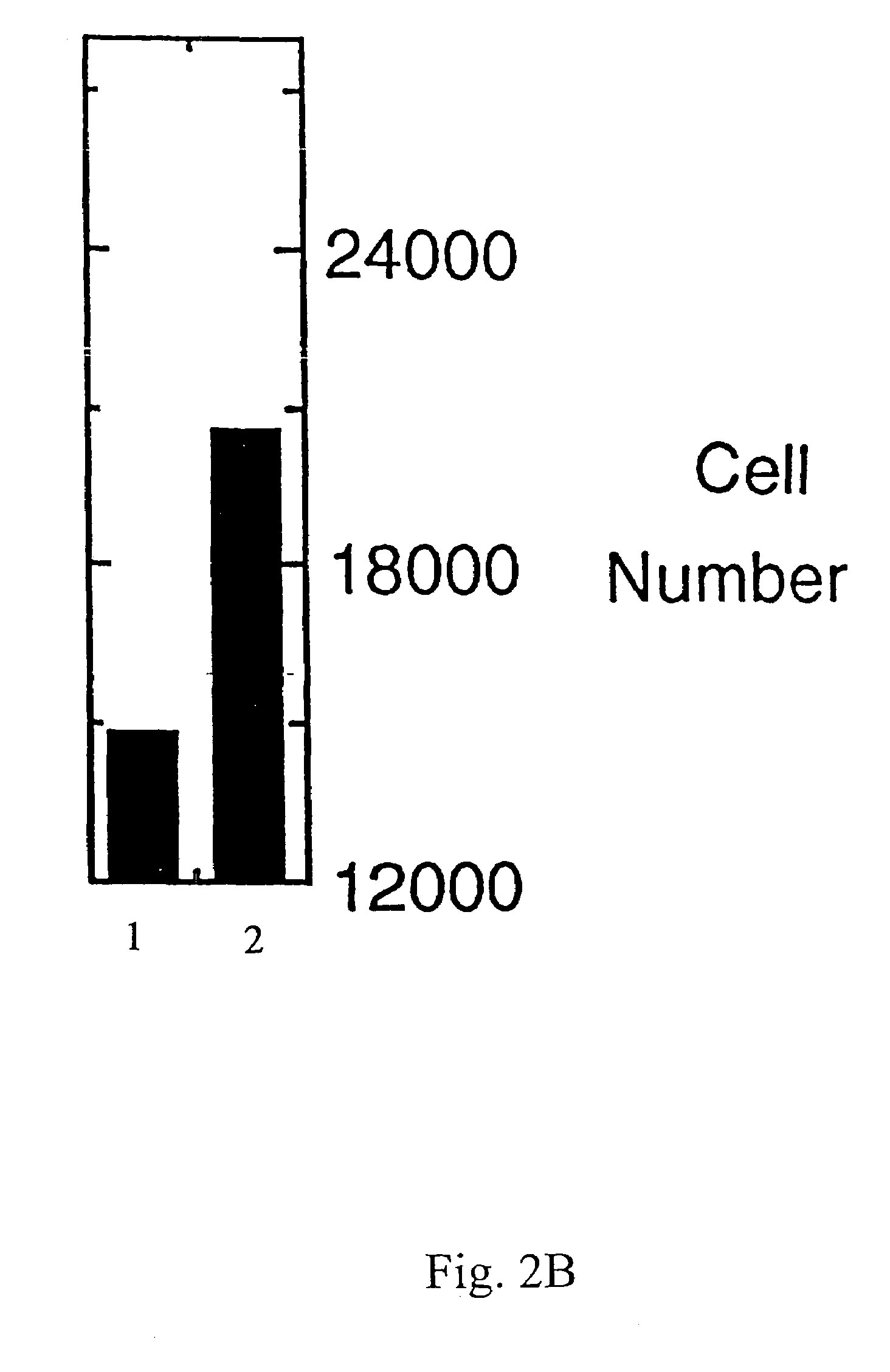Ocular tear growth factor-like protein
a growth factor and ocular protein technology, applied in the field of new ocular proteins, can solve the problems of bacterial infection, loss of vision, ulceration, etc., and achieve the effect of improving vision, reducing inflammation, and improving vision
- Summary
- Abstract
- Description
- Claims
- Application Information
AI Technical Summary
Benefits of technology
Problems solved by technology
Method used
Image
Examples
example 1
Isolation of the Lacritin Gene
cDNA and Genomic Cloning of Lacritin
[0074]Duplicate filters containing plaques (5×104 per filter) from each of ten sublibraries of a human lacrimal gland cDNA library (Dickinson & Thiesse, 1995) were prehybridized at 42° C. for 4 hr in 5× Denhardt's, 6.76×SSC, 10 mM sodium phosphate, 1 mM EDTA, 0.5% SDS and 182 μg / ml salmon sperm DNA, and then hybridized overnight at 42° C. with one of two overlapping 23-mer oligonucleotides (‘S1’ [AGCTGGGGCACAGGCACCCGCAC; SEQ ID NO: 11] and ‘S2’ [GGGGTTCTGGGGCTGCAGCTGGG; SEQ ID NO: 12]) that had been end-labeled with [32P]gATP 7000 Ci / mmole (ICN, Irvine Calif.) and purified. Final wash conditions were 2×SSC (45° C.), corresponding to 29.5° C. less than the S1 or S2 Tm (74.5° C. in 2×SSC for both). Plaques positive in both filters were picked and rescreened three times in duplicate with each oligonucleotide, giving rise to forty-seven clones. Each was subsequently reanalyzed at increasing wash stringency (−29.5, −24.5, ...
example 2
Characterization of Lacritin Expression and Function
Preparation of Recombinant Lacritin and Anti-Lacritin Antisera
[0081]Full length lacritin cDNA was subcloned in frame into pET-28b (Novagen, Madison Wis.), with orientation confirmed by completely sequencing through the insert. Recombinant His-tagged lacritin was then generated by IPTG-induction of BL-21 transformed cells, and purified from media on Talon (Clontech; Palo Alto Calif.) resin using standard denaturing procedures. Required use of denaturing conditions for the binding step is presumed to reflect His tag inaccessibility due to folding in the absence of glycosylation. After elution, lacritin was extensively dialyzed versus PBS, and the His tag was removed by thrombin cleavage. Protein quality was assessed by SDS PAGE and Western blotting with anti-His antibody (Santa Cruz Biotechnology; Santa Cruz Calif.). Lacritin displays anomalous mobility in SDS PAGE. Lack of contaminating bacterial lipopolysaccharide was confirmed by ...
example 3
Characterization of the Lacritin Promoter
[0095]The working hypothesis is that lacritin gene activity is attributable to an atypically restrictive and powerful promoter working hand in hand with unique enhancer (and possibly repressor) elements in a milieu of appropriate transcription factors and co-regulators. Such tissue-specific transcriptional control equals or exceeds that of the aA-crystallin (lens), rhodopsin (retina), aldehyde dehydrogenase class 3 and keratocan genes (cornea), and offers a unique opportunity to initiate a new body of literature on nuclear management of gene expression in the human lacrimal gland.
Mapping of Lacritin Gene Regulatory Elements
[0096]Elucidating how lacritin gene expression is targeted to the lacrimal gland will be determined as described below to better understanding lacrimal gene regulation. First of all the identify the lacritin transcription initiation site(s) will be confirmed experimentally. Based on computational promoter analysis, transcri...
PUM
| Property | Measurement | Unit |
|---|---|---|
| Tm | aaaaa | aaaaa |
| Tm | aaaaa | aaaaa |
| viscosity | aaaaa | aaaaa |
Abstract
Description
Claims
Application Information
 Login to View More
Login to View More - R&D
- Intellectual Property
- Life Sciences
- Materials
- Tech Scout
- Unparalleled Data Quality
- Higher Quality Content
- 60% Fewer Hallucinations
Browse by: Latest US Patents, China's latest patents, Technical Efficacy Thesaurus, Application Domain, Technology Topic, Popular Technical Reports.
© 2025 PatSnap. All rights reserved.Legal|Privacy policy|Modern Slavery Act Transparency Statement|Sitemap|About US| Contact US: help@patsnap.com



